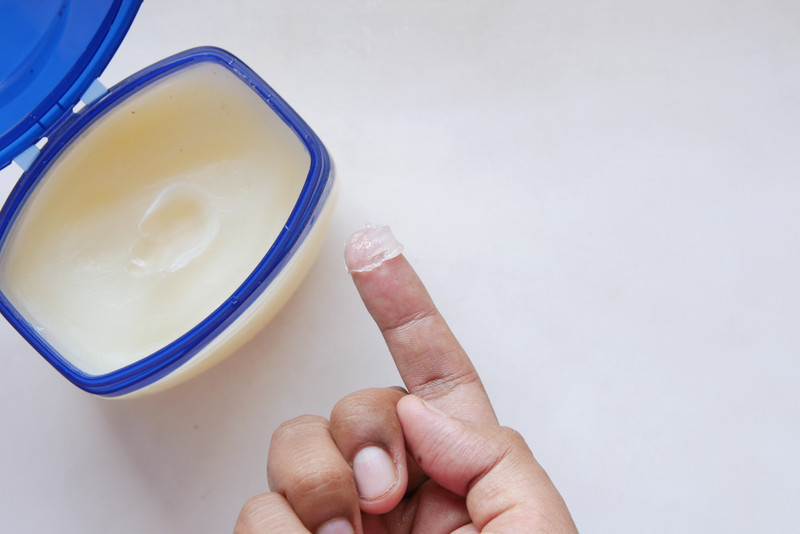If you are about to hit the road for at least one overnight stay and presumably longer, there are some things you probably don’t want to leave home without. A charged mobile phone for one; your American Express card (or Visa or Mastercard) for another. So what’s your choice for a third indispensable item that should be required packing for the trip? Our suggestion – a jar of petroleum jelly.
If we think hard enough, we can probably come up with 101 uses for petroleum jelly, or 102 if wearing our thinking caps. That’s how versatile and valuable this thick, gooey, waxy substance is. Petroleum jelly, also manufactured and sold under the brand name Vaseline, is the 19th-century innovation of Robert Augustus Chesebrough, a chemist who patented his own formula. He branded it as Vaseline, in 1872. That was sometime after Mr. Chesebrough had caught sight of oil workers using a petroleum-based jellylike concoction to help heal their wounds and burns. He then developed his own formula that he would ultimately package as Vaseline.
Not only can petroleum jelly assist in the healing of your skin by enhancing the retention of moisture (although, technically, it’s not a moisturizer), but it can also seal your skin by providing a water-protective barrier. In preparing petroleum jelly, manufacturers use a refining process that filters out potentially harmful ingredients to produce a compound as suitable for preventing chafing caused by skin rubbing against skin or a rough surface (such as a runner’s singlet) as it is in curtailing diaper rash for bambinos.
6 Practical Health-Related Uses for Petroleum Jelly
Okay, we don’t actually have 101 uses for petroleum jelly at our fingertips, but we know of many and have chosen to summarize six of the varied natural remedies commonly associated with this petroleum-based substance. Note, none of them involve eating, swallowing, or ingesting. Those are all no-no’s. As always, if you have any questions about the usage of petroleum jelly, be sure to direct them to your primary-care physician or other healthcare professional.
Treat eczema. Not only can petroleum jelly alleviate the discomfort, itching, and scaly patches linked to this chronic skin condition, but a 2017 study found that it can prevent eczema outbreaks among infants by moisturizing their skin.
Stimulate healing of damaged skin. This benefit applies mostly to minor skin wounds such as cuts, scrapes, and scratches that would benefit from the application of petroleum jelly. It works by keeping the affected area moist – not drying out as quickly – and thus stimulating faster healing.
Avert chafing. This is especially helpful for those involved in athletic activity in which two skin surfaces – such as the inner thighs, for runners – rub against one another or one surface grinds against a rough running apparel material, over time producing painful chafing. Such chafing can even lead to slow-healing blisters.
Reduce or eliminate diaper rash. Any parent who has had to deal with a crying baby suffering from painful diaper rash should be easily persuaded to start using petroleum jelly and applying it to the affected area to soothe baby’s bottom. And the best form of prevention in the first place is keeping the infant’s skin as clean and dry as possible.
Care for dry lips or feet, or cracked skin. Applying a light layer of petroleum jelly to dry lips, such as those exposed to icy-cold temps, can help moisten otherwise chapped lips in the absence of lip balm or chap stick. Ditto for cracked, dried hands or the heels of feet. This form of lip/skin care helps protect those surfaces from irritants and infections by a natural process known as “re-epithelialization,” which stimulates resurfacing with protective skin cells.
Thwart peeling. Really dry skin, such as exposed skin that has been sunburned, can start peeling within a day or two after onset of the sunburn. That can be annoying and even painful. Application of a modest amount of petroleum jelly lightly spread over the affected areas can provide a soothing effect and hasten the skin’s healing.
Perhaps it has never crossed your mind to add a jar of petroleum jelly to your inventory of natural remedies, but it would be wise to do so for the multifaceted role it can play in protecting and healing your skin. Its other common uses can include preventing split ends and broken follicles in your hair, assist in removing makeup, as a general lubricant (just not for sexual activity, however), and for alleviating pain and irritation on hour pet’s paws. At the same time, be sure to discuss its use with your personal physician or other healthcare professional, as misuse or overuse can be problematical.

